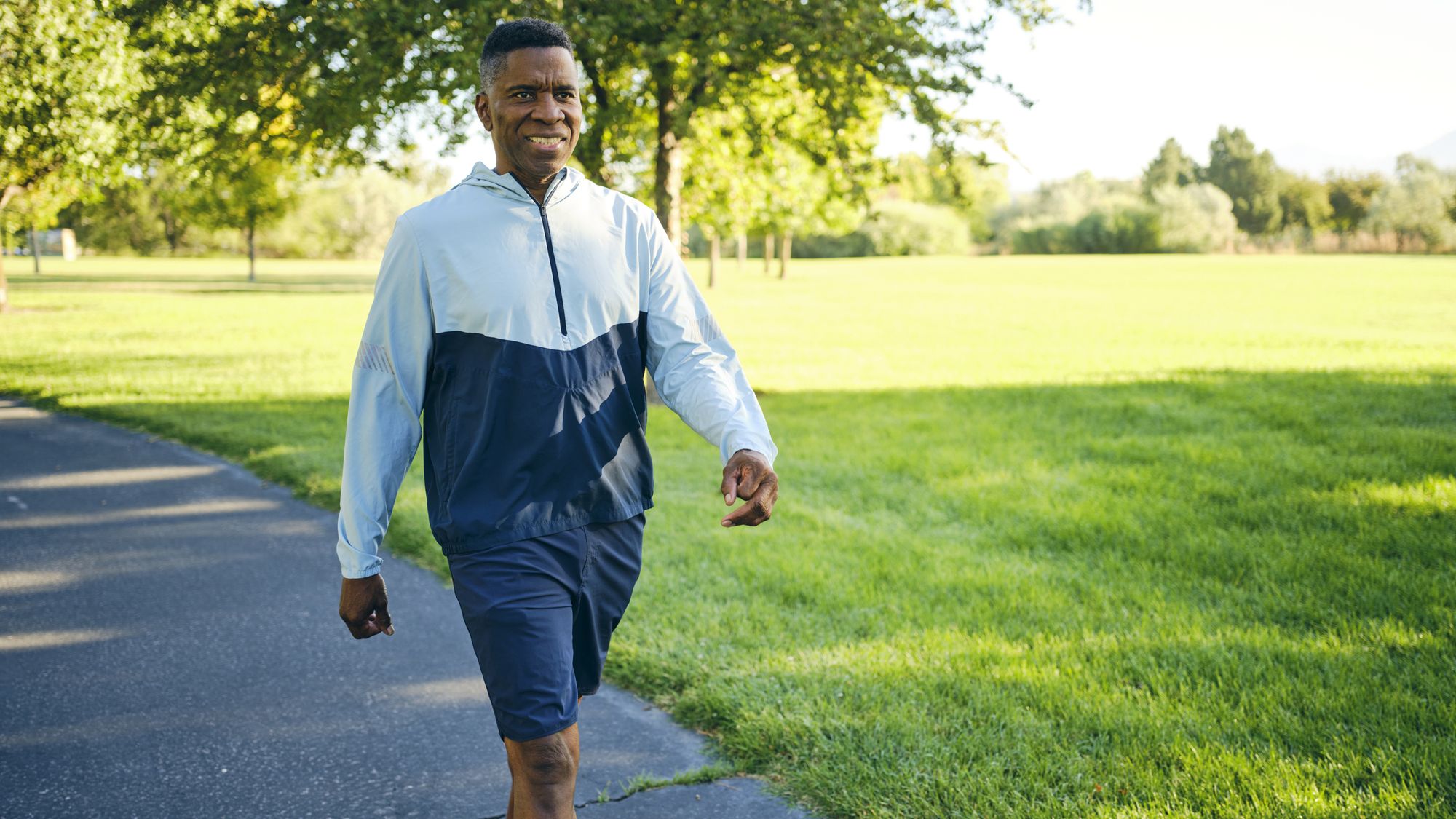A trainer says this is the walking workout you should do if you only have 15 minutes to spare
This timed workout is gentle on the joints and can be done on a treadmill or outdoors

When you only have 15 minutes to spare, one of the best things you can do for your health is to go for a walk. Time spent outdoors is great for your mental and physical health, and if you want to challenge yourself, there’s a simple way to make it into a walking workout—just add structure.
Denise Chakoian, a fitness trainer and the owner of CORE, rates walking workouts for the cardiovascular benefits while being gentle on your joints.
“For many people, especially beginners or those returning after injury, walking provides a safe way to build endurance without the strain that running or high-intensity workouts can bring,” she says.
Chakoian adds that some of the many cardiovascular benefits of walking include blood pressure regulation, boosting circulation and strengthening the heart muscle, all of which can contribute to higher energy levels and an improved sense of wellbeing.
“Walking also engages the large muscles of the legs and core, which improves posture and balance over time,” says Chakoian.
“From a trainer’s standpoint, the accessibility of walking means clients are more likely to stay consistent, since it requires no special equipment and can be done almost anywhere.”
While you can do this walking workout on a treadmill if you need a little extra support with balance, or if that is a more accessible option, Chakoian recommends getting outside as often as you can.
Start your week with achievable workout ideas, health tips and wellbeing advice in your inbox.
“Walking outdoors exposes people to fresh air and sunlight, which supports mood and vitamin D levels,” says Chakoian. “Beyond physical health, walking plays a major role in stress management and mental clarity. A steady walking routine helps lower cortisol and creates time to reset mentally, which is just as important as the physical benefits.”
How to do this 15-minute walking workout

Chakoian’s walking workout spends five minutes on the warm-up and cool-down. For the body of the workout, you will switch between three different paces, explained below.
The speed of each pace will vary between people according to your level of fitness, so it’s better to judge it by your rate of perceived exertion—how hard you’re working on a scale of 1-10.
Here are the four paces used in the workout:
- Comfortable: 1-2 effort out of 10—at this pace, you won’t be consciously paying attention to how much effort you’re putting in.
- Easy: 3-5 effort out of 10
- Brisk: 6-7 effort out of 10—you should be able to talk, but not sing.
- Power walk: 8-10 effort out of 10—walking as fast as you can without jogging.
Warm-up (2 minutes)
Start at a comfortable pace. As you walk, focus on your posture—keep your shoulders back, core engaged and arms swinging naturally.
Take several deep breaths to prepare your body.
Main intervals (10 minutes)
- Minutes 1-2: Walk at a brisk pace.
- Minute 3: Increase your pace to a power walk, pumping your arms with intention.
- Minute 4: Drop back to a brisk pace.
- Minute 5: Another burst of power walking.
- Minute 6: Recover at an easy pace.
- Minutes 7-8: Increase to a brisk pace.
- Minute 9: Settle into a power walk.
- Minute 10: Finish with a final strong, fast power walk push.
Cool-down (3 minutes)
Gradually slow your pace back to an easy walk. Focus again on controlling your breathing, letting your heart rate come back down.
Finish with light stretching: aim to target the calves, hamstrings and hip flexors.

Denise Chakaoian is a veteran fitness expert and founder of CORE Cycle and Fitness LaGree, the first Rhode Island studio to introduce the Lagree Method—a high-intensity, low-impact workout performed on the Megaformer. A former competitive dancer with nearly 30 years in the industry, she blends technical precision with holistic wellness. Her Providence-based studio offers cutting-edge group fitness, including Lagree, indoor cycling, boxing, and strength training, all delivered with an evidence-based, community-focused approach.

Lou Mudge is a Health Writer at Future Plc, working across Fit&Well and Coach. She previously worked for Live Science, and regularly writes for Space.com and Pet's Radar. Based in Bath, UK, she has a passion for food, nutrition and health and is eager to demystify diet culture in order to make health and fitness accessible to everybody.
Multiple diagnoses in her early twenties sparked an interest in the gut-brain axis and the impact that diet and exercise can have on both physical and mental health. She was put on the FODMAP elimination diet during this time and learned to adapt recipes to fit these parameters, while retaining core flavors and textures, and now enjoys cooking for gut health.
You must confirm your public display name before commenting
Please logout and then login again, you will then be prompted to enter your display name.
